Located in Northern Luzon in the Province of Ilocos Sur, the city of Vigan is famed for its Old Spanish Architecture.
Few towns in the Philippines retain the architecture of old Spanish colonialism, and while it’s not as widespread as the brochures advertise, it’s still an amazing place to explore.
So, we help you with exploring the top tourist spots in Vigan and how to get the most out of your trip.

About Vigan
Founded in 1572 by Spanish conquistador Juan de Salcedo, Vigan; a UNESCO World Heritage Site is known for its well-preserved Spanish colonial architecture. With its cobblestone streets, ancestral houses, and historic landmarks like St. Paul’s Metropolitan Cathedral and Plaza Salcedo, Vigan offers a glimpse into the country’s Spanish-era legacy.
You can experience the fusion of Spanish, Chinese, and Filipino cultures while exploring Vigan’s vibrant markets, delicious cuisine, and traditional crafts like pottery and weaving. As one of the few remaining Spanish colonial towns in Asia, Vigan is unique among cities in the region.
The town itself is compact with a few main attractions centered around the restored Calle Crisologo. Visitors can explore beautiful architecture, old ancestral homes, lively plazas, and see the mix of both the traditional and the modern within blocks of one another.

Wander Calle Crisologo
This is the main center of Spanish architecture, that you see in photos of Vigan. If there’s one must-visit destination in Vigan, this is it. This long avenue is the best and my favorite place in Vigan. It has done a great job of retaining and re-vitalizing the historic buildings of the era and the city.
You’ll find many restaurants, souvenir shops, antique shops, coffee shops, and hotels here. It’s perfect any time of day to wander. In the early mornings, it’s quiet, later it turns into a bustling commercial center, and at night, it’s full of diners, lit up and beautiful.
I liked diving in and out of the various stores, looking at local food, goods, and souvenirs for family back home. I especially loved the old historic homes and admiring the architecture while people watching tourists.

Kalesa Ride through Old City
Nothing says beautiful old city like horse-drawn carriages. In the old part of Vigan, along Calle Crisologo, You can take a kalesa (horse-drawn carriage) along the old cobblestone streets for a more romantic atmosphere.
It’s a perfect way to experience the city’s atmosphere, and you can even tour the city sites if you want (we did something similar in Manila as well). Just be sure to negotiate your price ahead of time. Especially if you want to do a tour, it’s important to know what’s included and how long you’ll spend at each place.
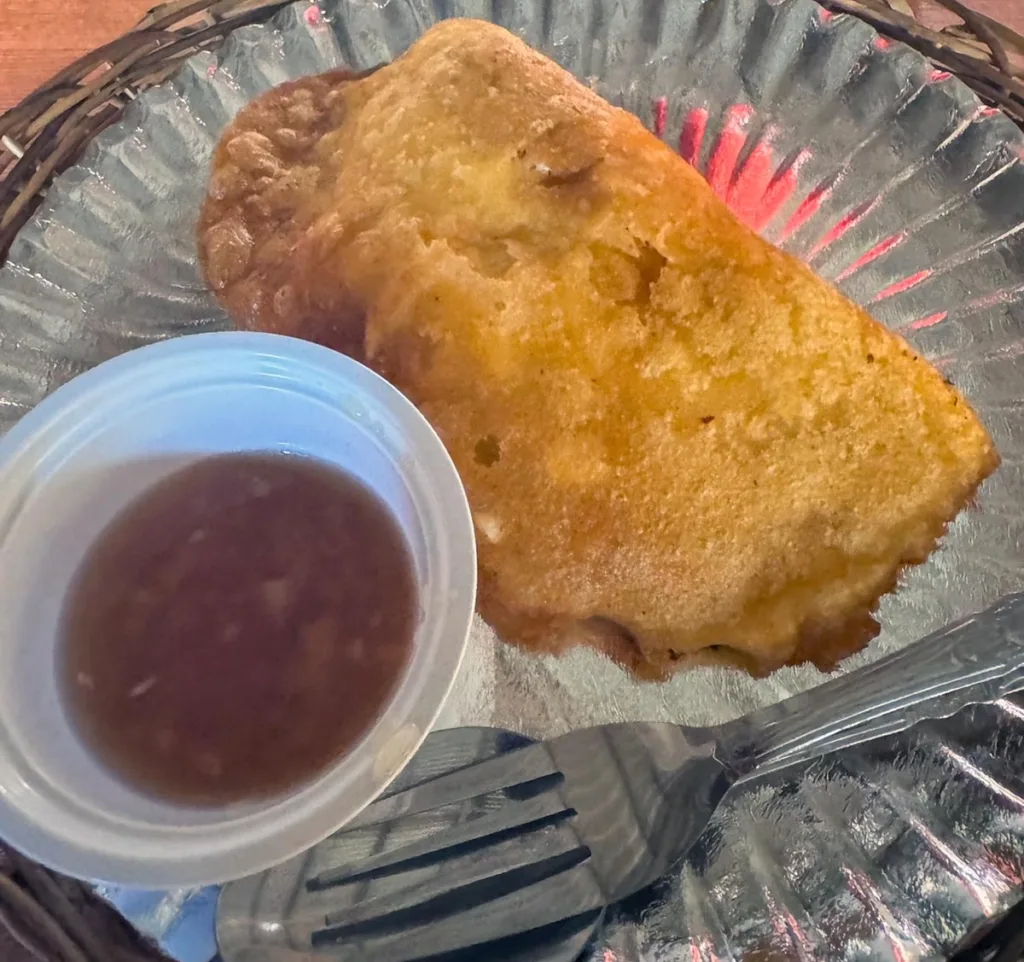
Enjoy the Vigan Empanadas
One of the things I found very interesting in Vigan is the Empanadas. Vigan is surprisingly famous for its empanadas, and you’ll find vendors throughout the city selling their local versions. There are meat, seafood, and vegetarian options at many of the places I visited. Just be sure to check which ones they have available when ordering.
Some of the best are pretty close to Calle Crisologo. It’s a nice way to just dip in somewhere and get a quick snack to get you back out, shopping, and exploring.
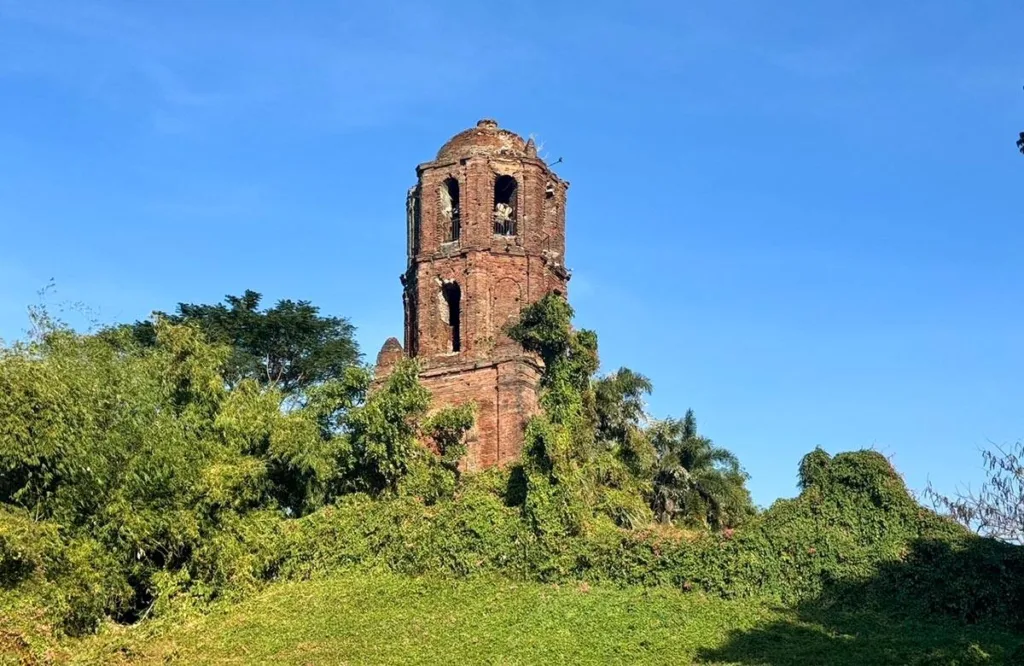
Bantay Watch Tower
The Bantay church bell tower is one of the loveliest church towers in the city of Vigan. Located north of the city center across the Govantes River, the tower is built on a hill overlooking the city.
The Bantay Belfry was built in 1591 and converted to its current role as a church bell tower in 1857. The tower has played a role from the Spanish colonial era, through WWII, and even now as a tourist site in the present day.
Visits to the Bantay Bell Tower are free (although there is an ‘optional’ donation) and after signing in you’ll have access to the site. Visitors can enter, climb the circular staircase to the bell tower, and get great views of the area.
Baluarte Resort and Mini Zoo
Baluarte Resort and Zoo is an interesting oddity on the outskirts of Vigan. The free zoo has tamed ponies, wild animals, and some weird dinosaur statues you can pose around. You can also check out some animal shows if you are interested. The resort is the brainchild of local politician Chavit Singson, and I imagine some of his personality comes through on the site.
Beyond the free zoo, there are some paid attractions, including a safari gallery and a tram. The museum has a collection of animal trophies if that’s your thing. Overall, I found it a bit odd for a zoo, but it has some great views of the surrounding area from the Baluarte Zoo.
Note: Don’t believe Google if it gives you an address in town, it took me a while to figure out where it really is. It’s about 3 km outside of the city center.

Mansions and Museums
Crisologo Museum
The Crisologo Museum in Vigan, Philippines is a restored ancestral home of the Crisologo family, offering a captivating journey through their history and contributions. The museum features specifically on Congressman Floro S. Crisologo and includes an array of artifacts and personal belongings, reflecting on his life and achievements and his family.
The museum’s architecture echoes Spanish colonial influences and attracts tourists and locals as an educational hub for understanding the area’s past and cultural identity.
Syquia Mansion
Syquia Mansion is a historic house turned museum that showcases the luxurious lifestyle of the Filipino elite during the Spanish colonial period. Built in the late 19th century, it was the ancestral home of the Syquia family, prominent figures in Philippine history.
The mansion is a stunning blend of Filipino, Chinese, and Spanish architectural influences, including solid brick construction, capiz shell windows, and intricate woodwork. Inside, you’ll find a vast collection of artifacts, antique furniture, and memorabilia belonging to the Syquia family. The personal belongings of Elpidio Quirino, the sixth President of the Philippines, are also on display.
Visitors can explore the well-preserved rooms, including the dining area, bedrooms, and receiving rooms, all adorned with period furniture and decorations.
National Museum of the Philippines, Ilocos Complex
The National Museum of the Philippines Ilocos Complex showcases the rich heritage of the Ilocos region and the Philippines. It is housed in the historic Burgos Mansion and features an extensive collection of artifacts, artworks, and historical treasures.
Visitors can explore exhibits spanning various periods of Philippine history, including displays that focus on the region’s indigenous peoples. The Padre Burgos house symbolizes the Philippines’ struggle for independence and offers a fitting setting for the preservation and celebration of the nation’s cultural heritage.
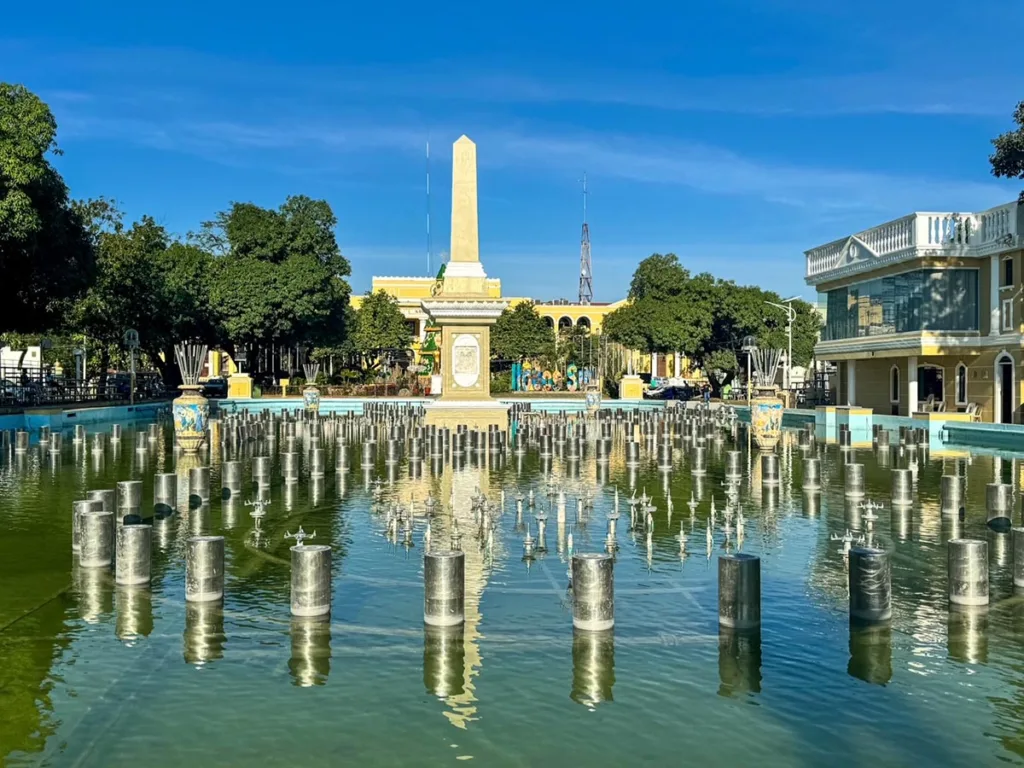
Plaza Salcedo
Located in the center of Vigan, Plaza Salcedo is a beautiful plaza great for wandering and people-watching. Named after the Spanish conquistador Juan de Salcedo who founded the city in the 16th century. It’s a beautifully large square located adjacent to the Vigan Cathedral and known for its statue of Juan as well as the very large fountain. The fountain also has the famed “dancing lights” held nightly (and detailed below).
There are plenty of shops and other things around the plaza, as well, and you can grab food to sit along the fountain or the stadium seating that encircles the fountain.
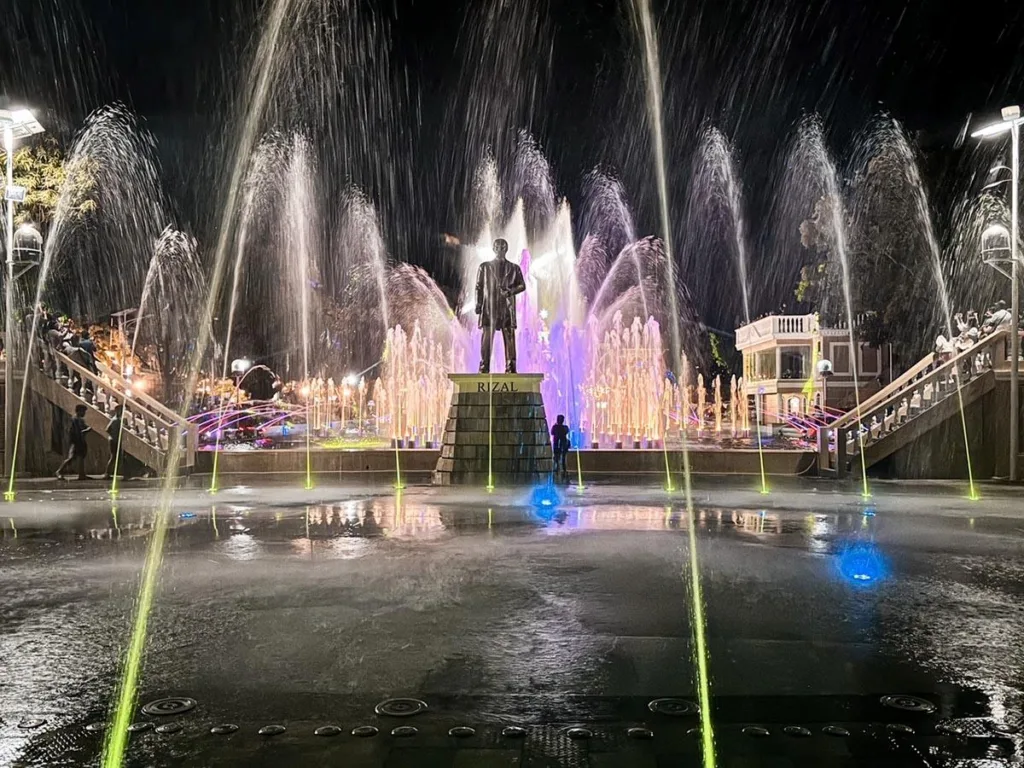
Dancing Light Show
This may have been my favorite thing (outside of Calle Crisologo). The dancing fountain light show takes place each evening at 7:30 pm. You’ll notice people lining up as the show is beginning to start.
The show lasts about 30-45 minutes and features lasers and dancing water set against different ‘pop’ songs. The colors and the projections were really well done! I didn’t stay for the entire show, but I enjoyed the few songs I did watch. It gets repetitive after a while, but it’s a fun evening activity.
The important thing is to get there a bit early to secure a spot with an unobstructed view. If you plan to stand close to the fountain you may get wet.

St. Paul Metropolitan Cathedral
The Vigan Cathedral, officially the Metropolitan Cathedral of the Conversion of St. Paul the Apostle, is a beautiful old church near the Plaza Salcedo. The church is a top tourist site for visitors to the city.
The 18th-century cathedral showcases Baroque and Neo-Gothic styles. Its façade has intricate details, and the interior features stained glass windows and religious artwork. It’s dedicated to St. Paul and serves as the seat of the Archdiocese of Nueva Segovia.
The cathedral has withstood natural disasters and undergone renovations to preserve its grandeur and is part of Vigan’s UNESCO World Heritage Site.

Plaza Burgos
For the Filipino priest Padre Jose Burgos, the plaza in the heart of Vigan is one of the best places to relax and watch locals. My favorite part of the plaza is that it was busy even in the evening mostly with local families eating and milling about.
The plaza has plenty of restaurants nearby, but it’s known for its small food stalls, which you’ll see mostly on the west side of the plaza. I recommend grabbing a snack and enjoying the park. Visitors can sample traditional Filipino street foods such as empanadas, okoy (shrimp fritters), and Vigan longganisa (local sausage).
The plaza also holds various events and celebrations throughout the year. I sadly wasn’t present for any during my stay, but I hear they are pretty lively.
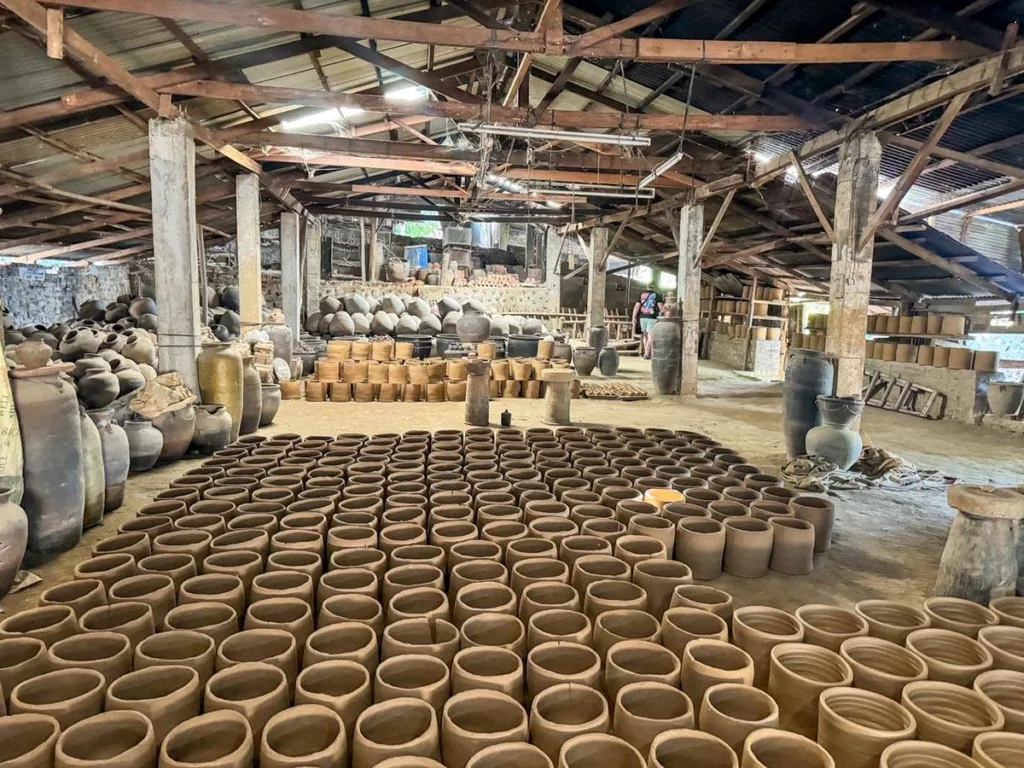
RJ Jar Factory
I found that earthenware jar making is still a tradition alive in the city of Vigan. There are several jar factories I’m told, but one of the most famous is RJ Jar Factory on the west side of the city. It’s a bit tucked away on Gomez so it took me a bit to find it.
I liked the big factory feel of the place with just jars everywhere. The folks working there are pretty nice to talk to, and there are some cool spots to take photos as well. Ask if they are doing clay pot demonstrations, as it’s worth it if they are available during your visit.
A lot of folks end up at the nearby Ruby Jar factory, and while they sell jars you don’t get the same experience of learning about jar making as you do at RJ. So just be sure you get the location right!

Relax in a Cafe
As opposed to some other towns in the Philippines, I liked relaxing in cafes in the town of Vigan. It may be due to the nice cafes here, the manageability of the city’s size, and the relaxed nature of the city itself.
I found some great ones along Calle Crisologo, and sitting here made me feel like I was back in old Spanish Vigan. And the coffee and pastries I found were top-notch as well.

Where to Stay in Vigan
- Hotel Veneto De Vigan: You can’t beat this hotel’s location and its beautiful building. The room was nice; it was smaller than expected but comfortable. Includes breakfast.
- Hotel Mercante: Great Location, great rooms, good staff. I don’t know if it’s the best hotel in Vigan, but it was our best.
- La Casa Blanca de Vigan: More central on Calle Crisologo and near some museums. Beautiful hotel with great rooms, clean, and a pool. I liked the above locations slightly better for their closeness to the plazas.
Best Time to Visit Vigan
Vigan is best for those looking to visit during the dry season. Here you’ll have the best weather for exploring and more shops open and activities going on. The dry season in Luzon runs from about November to April. For me, January and February seem to be best for temperatures. I found the area to be cool but not cold. Late in the dry season months of March and April, temperatures can rise above 90F (32C).
Getting to Vigan
Vigan surprisingly isn’t the easiest place to get to from other parts of the Philippines. I didn’t realize this before going, so I’ll try to help you with your travels here.
By Air
The closest airport to Vigan is in Laoag City (Ilocos Norte) to the north. Laoag City airport (LAO) is about 1.5 hrs by road to Vigan. You can catch a taxi or minibus from the city to Vigan. The only options for flights to the city are from Manila and Cebu and there are few flights arriving daily.
By Bus
This was the more complicated option.
From Manila: 8-10 hrs. There are daily buses from Manila to Vigan. I took the Partas bus which leaves from Cubao (Quezon City). I took the night bus (9 pm). Bring a blanket or warm clothes it was freezing on my night bus. [check prices]
From Baguio: 6 – 7 hrs. Buses from Baguio to Vigan leave from the Baguio bus terminal. They start around 5:30 in the morning and there are several morning and afternoon buses.
To/from Sagada: 12 hours. You’ll need to switch buses. This was a trying exercise. The most ‘direct’ way is via Baguio I left Vigan and switched in Bagiuo and another 5 hrs. The bus terminals for Sagada and Vigan were not at the same place in Bagiuo so grab a taxi/trike to get between.
FAQs
Is Vigan Worth Visiting?
I like Vigan, and it’s got a lot of charm for a small city. But the trouble I found is that the actual Spanish Colonial period architecture is limited. Much of what Vigan is famous for is limited to Calle Crisologo blocks, a few other nearby areas, and a few churches and other sites. Most of the rest of the city is what you’d find elsewhere in the Philippines.
So, while it’s beautiful, I’m not sure it was worth the 8-hour bus ride to visit from Manila. My plan was to visit Vigan and then Sagada, but unfortunately, traveling between Vigan and Sagada (by bus) is not an easy feat.
If you are planning to visit Vigan, I recommend doing it as part of a larger trip to the north and not as a standalone destination. You can see most of the highlights in a few hours.
Leave a Reply